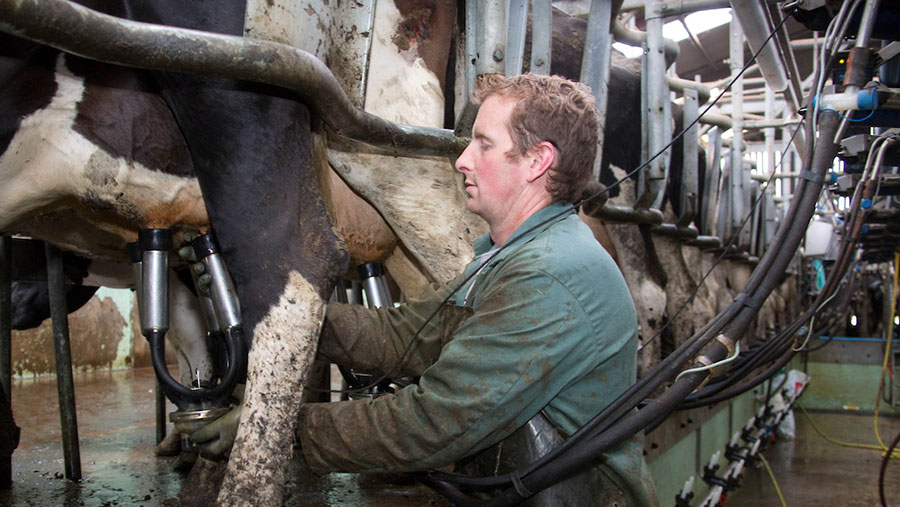How to apply for settled status and skilled worker visas
 © Tim Scrivener
© Tim Scrivener Any farmers with EU, European Economic Area (EEA) or Swiss citizens working for them, who were already living in the UK as of 31 December 2020, and haven’t yet applied for residency, need to make eligible employees aware they need to apply via the EU Settlement Scheme before 30 June 2021.
See also: How to help EU staff achieve settled status to work in UK
The EU Settlement Scheme
The EU Settlement Scheme allows EU, EEA or Swiss citizens to continue to live and work in the UK, have access to free healthcare and a range of benefits. It is important that all eligible workers apply – without it they will lose their right to work and live in the UK.
The employee needs to make the application online via the government website page “Apply to the EU Settlement Scheme”. Guidance is available in 25 languages.
The application is free and a relatively straightforward process. The employee will need:
- A valid passport or national identity card
- A digital photo of their face (which they can take themselves on a phone)
They will need to either scan and upload these documents using the “EU Exit: ID Document Check” app on an Android phone or iPhone 7 or above (for those with a biometric ID or passport) or send the documents in the post and upload the digital photos using the online application.
The employee will also need to provide proof of continuous residency in the UK. They can use their National Insurance number, which allows this to be checked automatically. Separate applications will also need to be made for spouses and children.
Skilled Worker visa scheme
After 30 June, the only way to bring new employees from anywhere in the world into the UK to work is via the Skilled Worker visa scheme.
This change will very quickly begin to impact the availability of labour, and farm employers may be looking for other ways to fill this labour gap.
The scheme will allow people to come, or stay, in the UK to do an eligible job, with an approved employer. But many of the farm roles that have in the past been filled with short-term EU staff are unlikely to qualify as skilled under this scheme.
Costs of the Skilled Worker visa scheme
- There is an application fee of between £610 and £1,408 to the Skilled Worker visa scheme, depending on occupation and whether the application is being made from within or outside the UK. The individual applicant, not the sponsor, will have to pay for this
- Most applicants will also have to pay a healthcare surcharge of £624
- The cost to become a sponsor under the scheme is £536 for a small company
- The cost of issuing a certificate of sponsorship to each sponsored worker will be £199 for every employee you intend on sponsoring
Scheme eligibility
A full list of eligible occupations and roles that can be filled under the Skilled Work visa scheme is available on the UK government website. For agriculture, the only eligible roles listed are “managers and proprietors” or “herd manager”.
It is going to be very hard to argue that a farmworker or milker can be employed under this scheme and there will be extra costs involved (see Box 1: Costs of the Skilled Worker visa scheme). The responsibility is placed on the employer, as the sponsor, to prove the role meets the scheme’s criteria.
As an employer of a Skilled Worker, a farmer will need to be approved by the Home Office and provide workers with a certificate of sponsorship and information about the role they will be undertaking. Proof must also be provided that someone applying for a Skilled Worker visa can speak, read, write and understand English.
Farmers will also need to have the right human resources system in place to track this, record employee attendance and contact details, and report any issues or problems to the Home Office.
Recruitment pressures
For dairy units that have relied on a regular turnover of EU labour, the loss of this source will increase recruitment pressures. Unfortunately, bringing workers in under the Skilled Worker visa scheme is unlikely to assist in filling the labour gap.
It can be tempting to spend time thinking about how to work around the system to maintain the status quo, but it will be those businesses that think proactively and adapt that will be best able to attract and retain high-quality staff (see Box 2: Tips for attracting local staff).
Tips for attracting local staff
- Consider offering flexible hours by adopting shift patterns. For example, a prospective employee may want to be able to pick their children up from school three days a week and have every Tuesday morning off to go fishing, and if you can offer that, you might just be advertising their dream job.
- Provide proper training. Getting new employees to follow other members of staff for a shift or two is not adequate training, particularly for those without a farming background
- Offer career development. With an EU worker, you may have had an employee whose overriding aim was to earn as much income as possible, providing you with fewer farm staff working longer hours, but perhaps with little motivation to develop skills. But local people’s motivations may be different, and it is likely they will be looking for personal development
- Put protocols, staffing procedures, and rotas in place to create lines of reporting and responsibility
